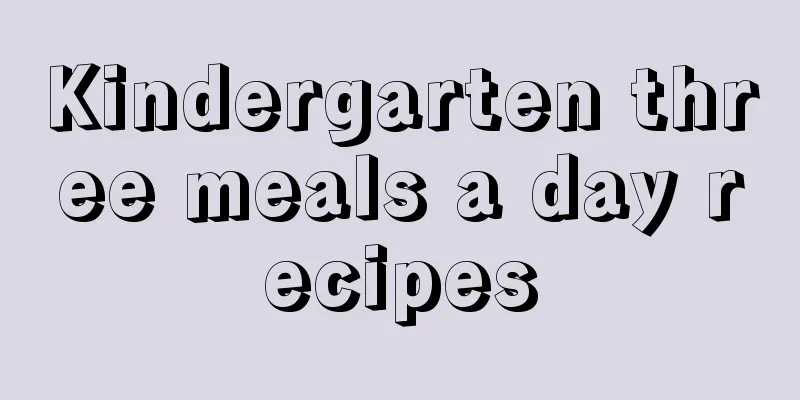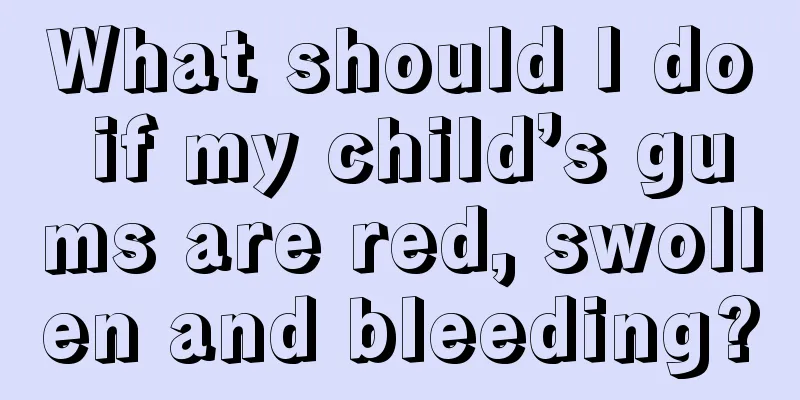Kindergarten three meals a day recipes

|
Children in kindergarten are in their developmental period. During this period, if the children's nutrition is adequate, it will be very beneficial to their healthy development. Generally speaking, the food provided to kindergarten children is usually divided into three types: breakfast, lunch and dinner. Kindergartens with better conditions can prepare morning snacks and afternoon tea for children. Below, we will introduce in detail the food suitable for kindergarten. 1. Kindergarten menu - breakfast: Breakfast in kindergarten is not compulsory, parents can choose freely. For parents who are racing against time in the morning, it is a great blessing that their baby can have breakfast in kindergarten. The kindergarten provides different breakfasts every day, which really allows parents to no longer worry about their baby’s nutrition. Although not all kindergartens provide breakfast, we see more and more kindergartens launching breakfast services to meet the needs of parents. Non-boarding kindergartens usually serve breakfast in the dining room rather than in the classroom where the babies are. The babies who eat breakfast at a fixed time every day are looked after by 1 to 2 teachers. Parents can take care of their baby themselves after he finishes eating, or they can leave the baby to the teacher. Breakfast expenses are included in the normal food expenses, and the prices and settlement methods of each park are also different. Breakfast in kindergartens is generally divided into two categories: dry and wet. Dry items include knife-cut steamed buns, red bean paste buns, custard buns, meat dumplings, soybean paste eggs, steamed dumplings, steamed rolls, etc., while wet items are usually mashed noodles, wontons, porridge, etc. 2. Kindergarten Menu - Morning Snacks The morning snacks are relatively simple, mostly some ready-made biscuits, cookies, shachima, cakes, bread, etc., paired with milk or soy milk. Snacks are a very happy moment for babies as a transition between free activities after the scattered admission to kindergarten in the morning and normal classes. 3. Kindergarten Menu - Lunch Whether the food in kindergarten is good or not depends mainly on lunch. Each kindergarten will post the weekly menu in a prominent place, listing breakfast, lunch, afternoon snack and dinner one by one. Parents can learn about the food their baby eats in kindergarten to avoid duplicating the food at home and making their baby disgusted. If you find that there is food on the menu that day that your baby may be allergic to, you should tell the teacher first. Kindergartens usually eat meat slices, meatballs, chicken, beef brisket, and shrimps. Fish is rarely eaten. There are a wide variety of vegetables, usually selected according to the season. Liver and pasta are eaten once or twice a week. Eggs are rich in nutrients, easy to add to dishes, and have many cooking variations. They are a dish that can be seen almost every day in kindergartens. The kindergarten also prepares sick meals for sick babies, including white porridge, meat floss, soft rice, wontons, noodles, etc. You can choose according to the baby's condition. 4. Kindergarten Recipe - Afternoon Snack Most of the afternoon snacks are made by the kindergarten cafeteria aunties and there are rich varieties. Sometimes it is various steamed buns, dumplings, cakes, spring rolls, served with honey water, chrysanthemum tea, fruit juice, and yogurt; sometimes it is sweet or salty porridge. Some kindergartens also arrange for children to drink milk or soy milk in the afternoon. 5. Kindergarten Menu - Dinner There are relatively few kindergartens that can provide dinner, and only some boarding kindergartens are qualified to provide dinner. Some kindergartens that accept both full-time and day care children will arrange for the day care children, whose parents pick them up late in the evening, to have dinner together with the full-time children after day care children finish school in the afternoon. |
<<: Causes of intussusception in children
>>: Brain changes in premature infants
Recommend
What should I do if my baby always bites his lower lip?
Some babies have abnormal phenomena, especially s...
Why can't you kiss a baby on the mouth?
Kissing is an expression of love. Many parents li...
Causes of drooling in children
When we see a cute baby, we can't help but go...
Why is my child anorexic and refusing to eat?
There are many reasons for anorexia in children, ...
Rash on the child's face
If a rash appears on a person's face, it is t...
What to do if your child is constipated?
Children’s constipation is inseparable from their...
How to treat developmental delay in children
Developmental delay in children is a common situa...
What should I do if my baby doesn’t sleep well?
I believe that many young mothers have this probl...
What are the symptoms of encephalitis in children?
Encephalitis is relatively common in clinical pra...
What causes joint pain in children?
Many parents are a little surprised, because join...
What are the dangers of obesity to children?
Living conditions are getting better and better n...
Why does the child snore?
Many people think that children do not snore norm...
What to do about bronchial asthma in children
Bronchial asthma has always been a stubborn disea...
Why is the baby's hair yellow?
The hair of us Chinese people is basically black,...
Prevention and care of bloating in infants
Young children's bodies have relatively poor ...









